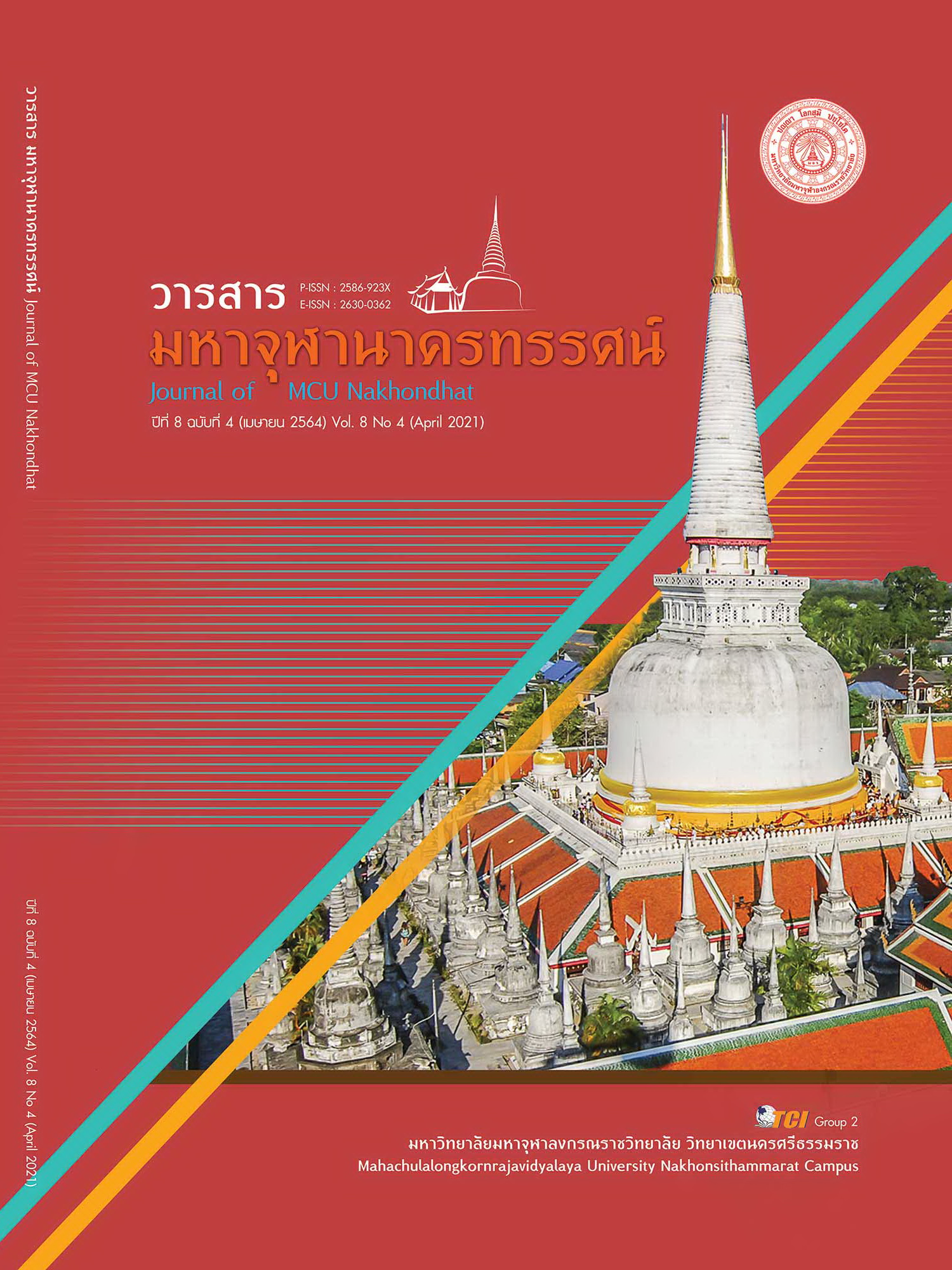PROGRAM IN DEVELOPMENT OF POTENTIAL AND SKILL IN NURSING CARE FOR PATIENTS AFTER CARDIAC SURGERY USING EXTRACORPOREAL MEMBRANE OXYGENATION
Main Article Content
Abstract
This research and development was designed to enhance of potential and skill of nurses caring for patients after cardiac surgery using Extracorporeal Membrane Oxygenation (ECMO). The study aimed at investigating problems, desires, and expectations of nurses. In addition we studied to develop, and evaluate the effectiveness of the program to enhance their potential and skill in nursing care for patients after cardiac surgery using ECMO. This research comprise three phases 1) investigating problems, desires, expectations of nurses, 2) develop, and 3) evaluate the effectiveness of the program. Samples were eight registered nurses (RN) working in Cardiovascular Thoracic Surgery Intensive Care Unit in phase 1, 22 RNs in phases 2, and 3. Experimental measures were a training program, a manual, and teaching plan. Measures for data collection were a questionnaire for demographic data, knowledge, perception of self-efficacy, practice guideline, satisfaction with the program, and in-depth interview. Data were analyzed using frequency, percentage, mean, standard deviation, paired samples t-test, and content analysis. The results showed that: 1) Nurses must be trained to develop their knowledge, attitude, self-efficacy and practice guideline in caring for patients after cardiac surgery using ECMO, 2) after experiment, a significant increase of knowledge, perception of self-efficacy and practice guideline ( = 4.41, 1.16, and 0.50 was found at p < 0.001), and 3) samples expressed high satisfaction with the program (
= 4.05, SD = 0.15).
Article Details
References
ชูชัย สมิทธิไกร. (2558). การฝึกอบรมบุคลากรในองค์การ. (พิมพ์ครั้งที่ 9). กรุงเทพมหานคร: สำนักพิมพ์แห่งจุฬาลงกรณ์มหาวิทยาลัย.
ปิยธิดา บวรสุธาศิน และนิภาพร จันทราทิพย์. (2562). การใช้เครื่องพยุงการทำงานของหัวใจและปอดในผู้ป่วย หลังผ่าตัดหัวใจแบบเปิด: ปัญหาและการพยาบาล กรณีศึกษาผู้ป่วยผ่าตัดลิ้นหัวใจ. วารสารวิชาการแพทย์เขต 11, 33(3), 551-564.
วรรณชนก จันทชุม และคณะ. (2563). การพัฒนารูปแบบการสอนงานในการปฏิบัติการพยาบาลของ พยาบาลพี่เลี้ยงโรงพยาบาลกรุงเทพขอนแก่น. วารสารการพยาบาลและการดูแลสุขภาพ, 38(1), 157-166.
วรรณี แกมเกตุ. (2555). วิธีวิทยาการวิจัยทางพฤติกรรมศาสตร์. (พิมพ์ครั้งที่ 3). กรุงเทพมหานคร: จุฬาลงกรณ์มหาวิทยาลัย.
สมลักษณ์ เทพสุริยานนท์ และสุวรรณา ภู่ทิม. (2562). การใช้เครื่องพยุงการทำงานของหัวใจและปอดในผู้ป่วยหลังผ่าตัดหัวใจ: ปัญหาและการพยาบาล. วารสารพยาบาลโรคหัวใจและทรวงอก, 30(1), 17-31.
สมาคมศัลยแพทย์ทรวงอกแห่งประเทศไทย. (2563). สถิติการผ่าตัดหัวใจในประเทศไทย ปี 2560 - 2562. เรียกใช้เมื่อ 1 ธันวาคม 2563 จาก https://ststhai.org/en/stats/
สหัสพร ยืนบุญ. (2561). ผลของโปรแกรมการเตรียมความพร้อมเข้าสู่ตำแหน่งผู้บริหารทางการพยาบาลระดับต้นที่โรงพยาบาลระดับทุติยภูมิแห่งหนึ่ง. ใน วิทยานิพนธ์พยาบาลศาสตรมหาบัณฑิต สาขาวิชาการบริหารการพยาบาล. มหาวิทยาลัยคริสเตียน.
อารี ชีวเกษมสุข. (2559). สมรรถนะผู้นำทางการพยาบาล แนวคิดและการพัฒนา. กรุงเทพมหานคร: เฮ้าส์ ออฟ เคอร์มิสท์.
Ball, L. et al. (2016). Postoperative complications of patients undergoing cardiac surgery. Current opinion in critical care, 22(4), 386-392.
Bandura, A. (1977). Social Learning Theory. New Jersey: Prentice-Hall.
Biancari, F. et al. (2018). Meta-Analysis of the Outcome After Postcardiotomy Venoarterial Extracorporeal Membrane Oxygenation in Adult Patients. Journal of Cardiothoracic and Vascular Anesthesia, 32(3), 1175-1182.
Fouilloux, C. et al. (2019). Impact of education and training course for ECMO patients based on high-fidelity simulation : a pilot study dedicated to ICU nurses. Perfusion, 34(1), 29–34.
Johnston, L. et al. (2018). Education for ECMO providers: Using education science to bridge the gap between clinical and educational expertise. Seminars in perinatology, 42(2), 138-146.
Knowles, M. S. (1984). Self - directed learning: A neglected species. (3rd. ed). Houston: Gulf Publishing Co.
Munro, N. & Taylor-Panek, S. (2017). The nurse practitioner role: the communication link for cardiac surgery patients. Critical care nursing clinics of North America, 19(4), 385-394.
Polit, D. F. & Beck, C. T. (2006). The content validity index: are you sure you know what's being reported? Critique and recommendations. Research in nursing & health, 29(5), 489-497.
Turner, D. A. & Cheifetz, I. M. (2013). Extracorporeal membrane oxygenation for adult respiratory failure. Respiratory care, 58(6), 1038-1052.
Werther, W. B. & Davis, K. (1993). Human resources and personnel management (4th ed.). USA: McGraw-Hill, inc.


